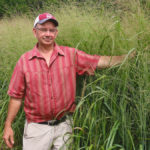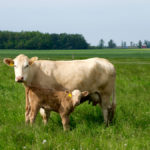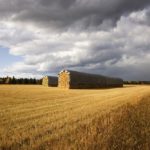Tag Archives Forages

Putting value on the effect of undigestible forage fibre
Using highly digestible fibre corn hybrids usually makes financial sense, says researcher

Switchgrass can replace straw in dairy rations
However, researchers caution against feeding too much to lactating cows or milk production could drop

Switchgrass breeding makes progress in Ontario
Progress has been made on dormancy, speed of establishment and lodging
Winter wheat harvest two weeks behind, soybean aphids in small numbers
Ontario Field Crop Report for the week of July 22

Hay and forage co-op seeks more producers before expanding handling facilities
The goal is to build a hay double-compressor in southern Ontario to serve export markets

Genetically modified alfalfas find their place
Feed quality, harvest window and seed establishment are benefits

Cattle turnout timing a balance of forage growth, nutrition
Maintaining top feed quality should be the goal of any pasture system

Getting the grass-fed dairy details right
Harriston-area dairy farmer focuses on pasture and grass forages and feeds no grain

Drought’s effects linger on Prairies



